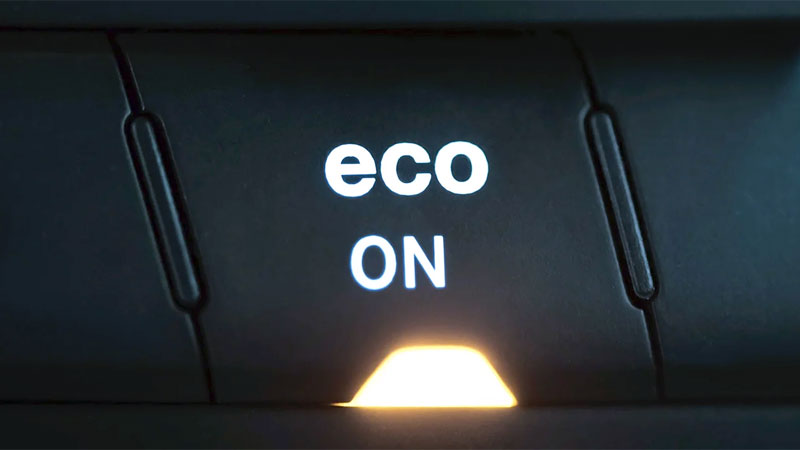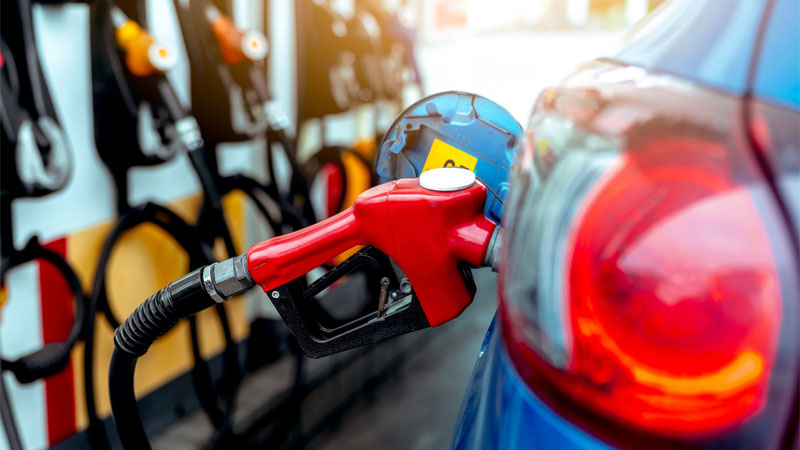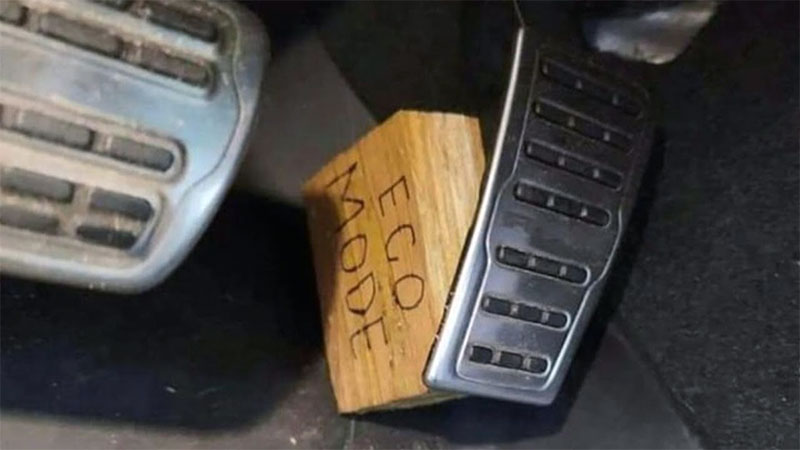Over the last couple of years, fuel prices have skyrocketed, placing additional financial pressure on motorists far and wide. Even those driving smaller, compact cars have begun feeling a significant amount of pain at the pump. This has caused many to forgo their typical Sunday afternoon drive, in favor of saving a few dollars by staying at home.
As a result of this exponential increase in fuel costs, many drivers have begun contemplating the best possible way to reduce fuel consumption during necessary work.
Luckily, a host of newer vehicles already possess the ability to facilitate these savings, through the use of specialty programming, which enhances engine efficiency. This revolutionary technology is referred to by most manufacturers as “Eco Mode”, or “Econ”.
Drivers can now choose to operate their vehicles under such parameters, thereby reducing fuel consumption, and saving a few bucks along the way. However, the unveiling of such tech has also raised a number of worthy questions among consumers along the way.
Read on to learn more about the purpose behind “Eco Mode”, as well as how to make the most out of such specialized functions.
What Does Eco Mode Mean On a Car?
Eco Mode is a specific setting, made available to motorists for manual use. When selected, Eco Mode somewhat restricts a vehicle’s performance, in a bid to increase fuel economy to the most optimal level. This is done by limiting throttle response, adjusting shift points, and manipulating an engine’s air/fuel ratio.
When operating in Eco Mode, you might notice that your engine is not as responsive to a jab of the accelerator, or as quick to shift when increased output is demanded. This is due to the fact that an engine is operating upon an alternate, yet parallel set of performance parameters.
Simply put, in Eco Mode, an engine operates in much the same way as it would if a driver were to drive extremely conservatively. However, in this case, this response is achieved without any additional level of effort on a driver’s behalf.
Do All Cars Have Eco Mode?
Up until approximately a decade ago, the idea of a specialty operating preset, such as Eco Mode, was little more than wishful thinking. For this reason, one is unlikely to find any such technology offered by vehicles that are not of a relatively late design.
Furthermore, not all manufacturers have begun utilizing this technology, and those that have, have tended to introduce such features gradually. Most manufacturers have also been relatively selective, when determining which vehicles should feature Eco Mode capabilities.
Therefore, not all late model vehicles feature Eco Mode technology, though it is quite reasonable to assume that functions of this type will become increasingly prevalent over the next decade. This is especially likely, if fuel prices continue to soar to unprecedented levels.
At the current moment, vehicles featuring Eco Mode are offered by Honda, Ford, Chevrolet, Lexus, Kia, Hyundai, Toyota, and Volvo.
How Does It Work?
Eco Mode works by forcing a vehicle’s ECM/PCM to operate on an alternate set of performance parameters. These parameters are relied upon to determine engine and transmission response, under various inputs. However, in this case, these parameters are geared primarily toward reducing fuel consumption.
When operating in Eco Mode, an engine’s fuel trims are adjusted, as is overall engine response. A transmission’s shift points are also adjusted, in a bid to prevent inefficient, fuel-consumptive shifts.
Does Eco Mode Actually Save Gas?
When operating in Eco Mode, it is fairly common for a vehicle to achieve slightly better fuel economy. This, of course, is the exact point behind Eco Mode, as specified by a number of independent manufacturers.
The exact amount of fuel saved through the use of Eco Mode depends upon several factors, including the exact make/model of the vehicle in question, and the relative conditions under which such driving takes place.
Nonetheless, one can expect to save at least 2-3 MPG on fuel when operating continuously in Eco Mode.
Will It Make the Car Slower?
Eco Mode will not necessarily make a car “slower”, as you might expect. You will still be able to keep up with the flow of traffic and cruise at highway speeds while operating in Eco Mode. However, your ability to accelerate rapidly, or race the throttle might be negated.
In simpler terms, Eco Mode restricts a driver from making a number of moves that would typically increase engine RPM needlessly, thereby consuming excess fuel. You will still be able to drive in much the same manner as you generally would, albeit less aggressively.
When Should Eco Mode Be Used?
Eco Mode should be used any time that you wish to increase your vehicle’s fuel economy. This includes periods of both city and highway driving, or even back road cruising.
The use of Eco Mode is especially suggested if you are not in a hurry, and have plenty of time to reach your destination.
When Should You NOT Use Eco Mode?
The use of Eco Mode is not advised at any point in which spirited driving is required. This includes drives that are conducted under rushed circumstances, or when the flow of traffic necessitates quick acceleration across one or more lanes.
This is due to the fact that the use of Eco Mode typically restricts a vehicle’s performance, to a modest degree.
Examples Where Eco Mode Should Be Turned Off
- Turning from a side street onto a road with swiftly moving traffic where you have small windows of opportunity to merge in with the flow.
- Merging onto a highway from an on-ramp where you may quickly need to get up to speed of existing traffic.
- Waiting to turn left across 2 lanes of traffic whether in the center turn lane or an intersection with a flashing yellow light.
- Waiting at a stop sign to cross through one or more lanes of fast-moving traffic which has the right of way.
Can Driving in Eco Mode Too Much Be Bad For Your Car?
Currently, there is little belief that driving for extended periods of time in Eco Mode, presents any risk. In fact, most manufacturers state that Eco Mode can be used as often as desired by motorists, for undefined periods of time.
If driving in this manner posed any risks, manufacturers would be quick to state this fact, or else be subjected to endless warranty claims.
In general, the only factor limiting one’s use of Eco Mode is a personal preference. Though the use of Eco Mode reduces fuel consumption, it also limits performance to a certain degree. For some, this is a point of contention and can actually create safety issues.
- History of the Chevrolet SSR: The Retro-Styled Convertible Pickup - Apr 25, 2024
- The History of the BMW M Coupe (the “Clown Shoe”) - Mar 26, 2024
- The History of the Ford Flex - Feb 28, 2024







Still did not answer my question. When I pull my tent trailer can I have my Toyota in eco mode .
I really depends on the vehicle and load weight but in almost all cases, you wouldn’t want to use ECO mode when towing unless you are driving for long stretches on perfectly flat roads. Acceleration will definitely be affected but the biggest problem would be any elevation changes. Eco mode tries to get your transmission in the highest gear possible. When you’re towing a heavy load, being in a high gear when going uphill will cause unnecessary strain on your transmission and engine. In some cases, you won’t even make the hill without manually downshifting. Then when going downhill, you’ll be putting unnecessary strain on your brakes since there is very minimal engine braking happening. You can try it for yourself temporarily, but towing while in Eco mode isn’t a fun driving experience and probably won’t save you much gas anyway.
What does the setting symbol mean & the symbol of the car with arrows. When car with arrows us pushed it mentions camera